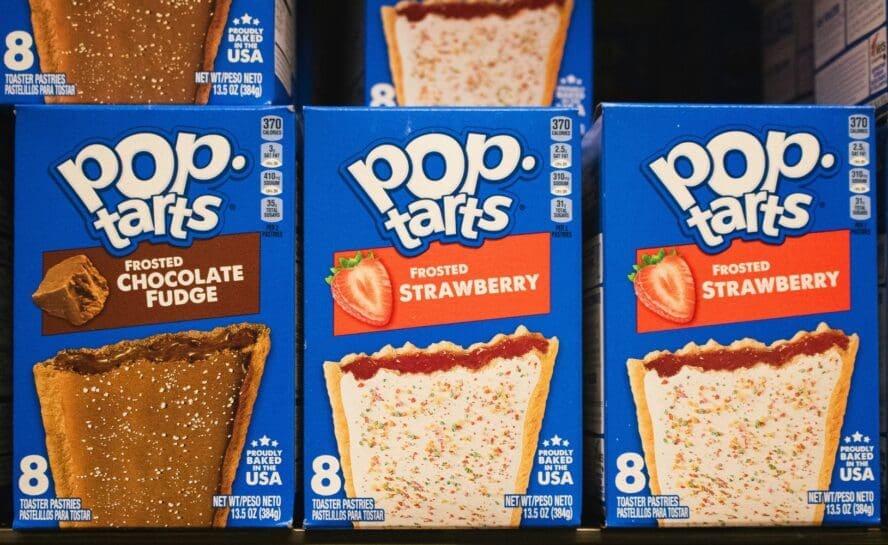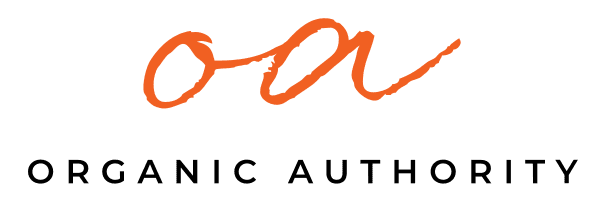European Food vs. American Food: Is It Really Better for You?
We’re covering four key differences and busting two commonly held myths.

As summer peaks and Americans begin to trickle back from their European getaways, the social media vacation pics are interspersed with videos touting the benefits of European food over American food. In most cases, these videos make a good point — food regulations tend to be stricter in the European Union, leading to more transparency and better food quality.
“The European food system often emphasizes traditional, minimally processed foods, and clearer food labeling regulations,” explains Lena Bakovic, MS, RDN, CNSC, a Registered Dietitian Nutritionist. “Europeans also tend to consume more whole foods, and fewer ultra-processed products.”
But of course, the European food system isn’t perfect either. So how do we separate fact from fiction? Here are four major differences when it comes to the American vs. European food systems — and two commonly-held myths that don’t hold up.
A Tale of Two Agencies
A big part of the reason why there’s such a big difference between European food vs. American food comes down to how food regulations are made. American decisions about food safety are largely made by the U.S. Food and Drug Administration (FDA), which manages both risk assessment and risk management.
In the EU, on the other hand, these two tasks are divided: The European Food Safety Authority (EFSA) convenes scientific panels of independent experts to make its risk assessments, which are then provided to the European Commission. The Commission considers these facts alongside social, political, technological, and economic factors before making EU food regulations.
These European methods are bolstered by laws mandating the EFSA to re-evaluate all food additives authorized for use before 20091. In the U.S., there is no such legal mandate. As a result, the FDA often adheres to its historical decisions rather than reassessing new evidence — until pressed to do so by consumer demand, such as through petitions or lawsuits.
Want more health news delivered to your inbox? Sign up for the newsletter for more well-researched, non-toxic living guidance and smart wellness advice.
The Flaws of GRAS Designation
An added variable leading to a lack of oversight in the U.S. is the “Generally recognized as safe” (GRAS) designation. In an effort to fast-track certain substances and additives, manufacturers can, in some cases, “self-affirm” the GRAS designation by convening their own expert panel to review potential safety concerns. In these cases, the FDA isn’t required to perform its own tests, which can lead to biased decisions.
In Europe, on the contrary, strict testing is required before any new substance hits the market. The EU law as a whole relies on the precautionary principle when approaching risk management, which means that if there are reasonable grounds for concern about possible harm to human health, proactive measures can be taken to minimize risk — even if scientific evidence is not yet conclusive2.
Overall, it’s fair to say that the EU tends to have a more robust approach to regulation than the U.S. But to understand what this means in practice, let’s take a closer look at supermarket shelves.
4 Major Differences Between the European and American Food Systems
1. American beef is laced with potentially cancer-causing hormones.

In 1989, the European Communities attempted to ban U.S. beef from the marketplace due to the use of synthetic growth hormones like rBGH and rBST3. These hormones have been legal in the U.S. since 1993, but officially joined the list of food additives banned in Europe in 1990. In 1997, the U.S. and Canada took the decision to the WTO Dispute Settlement Body, which ruled against Europe, saying there was insufficient evidence of the detrimental human health effects of consuming hormone-laced beef.
Recombinant bovine growth hormone (rBGH) is an artificial growth hormone that was linked in some early studies to increased risk of prostate, breast, colorectal, and other cancers. According to the American Cancer Society, however, later studies have failed to confirm these links4.
Other hormones used in the raising of beef cattle in the U.S. include estradiol-17β, progesterone, testosterone, zeranol, trenbolone, and melengestrol acetate. In Europe, these hormones were banned in 20035.
“There are significant disagreements between the EU and the US on the health issues of hormone treated beef,” Professor Guy Poppy, PVC Research and Innovation, University of Bristol, told Science Media Centre6. “Whilst the EU claims that one of the regularly used hormones is carcinogenic, the US and Canada claim to the WTO that the EU risk assessment is flawed. And several of the hormones used do not have any health claims against them.”
“Current scientific evidence in the US indicates that consuming beef or dairy products from cattle treated with synthetic growth hormones is not generally associated with health risks,” adds Bakovic. “The research does, however, continue…thankfully. Today more than ever, individuals are choosing traditional and minimally processed whole foods without added ingredients such as growth hormones.”
Hormones are also associated with animal welfare concerns.
It’s also important to consider that if these hormones remain banned in the EU, it’s not just down to increased risk of cancer.
“The bans are partly rooted in health concerns,” says Dr. Elisa Pineda, Research Fellow in Nutritional Epidemiology and Food Policy at the George Institute for Global Health UK, Imperial College London6, “but also reflect ethical and consumer preference standards that prioritize transparency and animal welfare.”
“The rearing practice which is involved in accelerating growth can be seen as an animal welfare issue,” adds Poppy, “as weight gain and the feedlots and other practices to reduce feed requirements and accelerate growth result in much lower animal welfare than rearing systems not involving hormones or feedlots.”
2. American chicken is rinsed in chlorine bleach.

In the U.S., chlorinating has long been a popular means of treating chicken to reduce the presence of harmful bacteria like salmonella and campylobacter. In contrast, this practice has actually been banned in the EU since 1997 — but not for any direct health risks. In fact, according to the EFSA, “chemical substances in poultry are unlikely to pose an immediate or acute health risk for consumers.”
The issue here isn’t linked specifically to the chlorinated chicken but to the underlying factory farming practices that have led to its popularity. “European regulators are seeing the antimicrobial washes as a band-aid to cover up what’s really a lack of adequate hygiene,” Sarah Sorscher, director of regulatory affairs at the Center for Science in the Public Interest, a consumer advocacy group, told NPR7.
“An analogy is going out for a walk and seeing a pile of dog muck,” Paul Wigley, Professor in Animal Microbial Ecosystems at the University of Bristol, told Science Media Centre6. “The UK/EU approach is to avoid getting it on your shoes. The American approach is [to wipe] it off when you get home — but we all know that some will remain trapped in the tread.”
The EU cites data that an integrated approach to food safety is more than sufficient to reduce the occurrence of Salmonella. NPR reports that when such integrated practices were implemented in the EU in the early 2000s, instances of Salmonella dropped by nearly 50% over five years7.
These days, only about 5 percent of the processing plants in the U.S. actually use chlorine washes, according to figures from the US National Chicken Council8. The chicken from these plants is often the cheapest on the market, meaning those most affected by this process are often low-income Americans.
“Affordable chicken can be a nutritious protein choice,” says Bakovic, “however, the lower prices are sometimes associated with certain farming practices which may include the use of antibiotics or chlorination.”
3. American foods contain more added sugars than European foods.

While the Dietary Guidelines for Americans recommend that less than 10% of total daily calories come from added sugars, the reality of American sugar intake is quite different. Americans consume an average of 13% of their daily calories from added sugars, according to a 2023 study in Nutrients9. The prevalence of diets with high added sugars is even higher among 31 to 50-year-olds, one-third of whom consume more than 15% of their daily calories in added sugars.
This stems in large part from the prevalence of sugar in the American food system, where everything from supermarket bread to yogurt contains added sugars. Ultra-processed foods specifically are packed to the brim with sugar (and could even be detrimental for your brain health).
A 2016 study in BMJ Open found that ultra-processed foods comprised 57.9% of caloric intake for the nearly 10,000 participants surveyed in a National Health and Nutrition Examination Survey9. Given the fact that ultra-processed foods’ added sugar content is about 21% of their caloric load, this intake contributed to a whopping 89.7% increase in energy intake from added sugars.
Meanwhile, in Europe, added sugar intake is a bit lower — only about 7 to 11% of total intake for adults, according to a 2017 study in Nutrition Journal10. Notably, these sugars mainly come from sweetened beverages (where you’d expect them to be!) rather than savory foods like breads and sauces.
High-fructose corn syrup is a big offender.
The quality of sugar matters, too, according to Bakovic. “American processed foods definitely often contain higher levels of added sugars, which include high-fructose corn syrup (HFCS),” she explains. “High intake of HFCS and other added sugars is most unquestionably correlated with chronic diseases and increased risk of obesity, insulin resistance, and diabetes.”
In Europe, long-standing quotas on HFCS mean that it’s a far less frequent additive. In fact, until these quotas were lifted in 2017, HFCS represented only about 4% of the sugar market. These days, however, European HFCS use is on the rise, which may contribute to increased health issues over time.
This context is critical for understanding the full picture of health in America vs. Europe. 2020 data highlighted a 17% obesity rate in France, compared to a 40.3% rate among Americans in the most recent CDC data from 202311. However, the CDC data represented the first time in over a decade that the American obesity rate didn’t increase. In France, on the other hand, obesity rates have been climbing, with a 11.3% obesity rate in 200412.
4. The bread in Europe is easier to digest than the bread in America.
Recently, influencers have taken to social media to claim that the bread in Europe is easier to digest than in the U.S. — and there are a few reasons why this actually checks out.
The first factor in comparing European bread vs. American bread comes down to the most prevalent wheat types on either side of the Atlantic. Brett Carver, an expert on wheat genetics at Oklahoma State University, tells the New York Times that we tend to rely on harder, higher-gluten wheats in the U.S13. In Europe, softer, lower-gluten wheats are more common, which can be easier to digest for those with a mild gluten intolerance.

“Wheat grown in the U.S. [tends to be] higher in gluten, whereas there are several more varieties of wheat grown in Europe that are lower in gluten. So they may not cause issues in those who are gluten-sensitive,” Melissa Groves Azzaro, RDN, LD, told GoodRx Health14.
Bread in Europe also tends to be made with a sourdough starter and fermented for several hours or even days, which makes difficult-to-digest carbohydrates easier on the gut. Add a lower likelihood of both added sugars and carcinogenic contaminants like the herbicide glyphosate (which is forbidden for use as a desiccant in the EU15), and it’s no wonder the bread in Europe is so much better.
It still depends on the specifics of the bread you buy.
That said, don’t be tempted to overgeneralize: The quality of European bread isn’t always a given. In France, for example, an ordinary baguette is leavened with yeast and only fermented for three to four hours, and additives are permitted to improve taste and texture16. You’ll need to splurge for a baguette de tradition for an additive-free loaf that’s been fermented for 15 to 20 hours.
Meanwhile, it’s true that most supermarket loaves are riddled with additives in the U.S. — but the range of great sourdough bakeries turning out loaves that can rival even those in Europe is on the rise.
Myths About the Differences Between European and American Foods
Myth #1: The U.S. allows way more artificial ingredients and dyes than Europe.
While historically, the U.S. has indeed permitted far more artificial ingredients and dyes than the EU, recent changes mean the differences here aren’t as striking as they once were. Known carcinogen Red 3 was finally banned in the U.S. this January, just six months after we finally eradicated brominated vegetable oil in July 2024.
The EU certainly has a leg up on the U.S. in some regards, with bans on additives like potassium bromate, a potential carcinogen used in some U.S. flours but banned in the EU since 1990. But in the world of artificial dyes, the EU hasn’t actually banned many more than the U.S.

While Blue 1 was previously banned in Europe, it was re-evaluated and certified as safe in 201017. And Red 40, Yellow 6, and Yellow 5, all of which have been banned in California public schools since 2024, are still allowed in Europe, though their use is heavily regulated and requires a warning label stating that the dyes can affect attention in children18.
Plus, despite what we might think, Europe has not banned glyphosate outright, opting to extend its authorization to 2033. And the U.S. continues to make strides, with the FDA setting a goal to remove six petroleum-based food colorings from the American food system by 2026.
Myth #2: Americans eat way more GMOs than Europeans.
It’s true that the American food market relies heavily on genetically modified crops. More than 90% of American corn and soy is grown using GMO seeds19, the majority of which have been genetically modified to withstand ample spraying with glyphosate.
In Europe, GMOs are more heavily regulated, with a legal framework constructed around a four-pronged mission — with the goal of protecting both human and animal health as well as the environment20.
That said, there’s a major loophole in this policy: The EU may not grow as many GMOs as the U.S., but it has nevertheless authorized the importation of several genetically modified crops, including 26 varieties of maize, chiefly for animal feed. And after a prolonged deadlock, it authorized the import of three more corn varieties for both animal feed and human food in April of this year21.
So while the European Union does indeed have strict policies for labeling GMOs, they’re definitely out there and growing more prevalent every day. In short, it’s not all good news on the other side of the pond; nor is it all bad news on our side — the best we can hope for is progress all around.
Read More on Organic Authority
Sources:
- https://food.ec.europa.eu/food-safety/food-improvement-agents/additives/re-evaluation_en
- https://datafisher.com/news/is-the-european-efsa-really-better-than-the-american-fda/
- https://pmc.ncbi.nlm.nih.gov/articles/PMC1083852/
- https://www.cancer.org/cancer/risk-prevention/chemicals/recombinant-bovine-growth-hormone.html
- https://www.congress.gov/crs-product/R40449
- https://www.sciencemediacentre.org/expert-reaction-to-the-debate-on-hormone-treated-beef-and-chlorinated-chicken/
- https://www.npr.org/sections/shots-health-news/2025/04/15/nx-s1-5364940/chlorinated-chicken-trump-tariffs-uk-eu
- https://pmc.ncbi.nlm.nih.gov/articles/PMC4785287/
- https://pmc.ncbi.nlm.nih.gov/articles/PMC9867287/
- https://pmc.ncbi.nlm.nih.gov/articles/PMC5251321/
- https://www.cdc.gov/nchs/products/databriefs/db508.htm
- https://pmc.ncbi.nlm.nih.gov/articles/PMC9918095/
- https://www.nytimes.com/2025/07/24/well/eat/health-effects-bread-europe-united-states.html
- https://www.goodrx.com/well-being/diet-nutrition/gluten-europe-vs-united-states?srsltid=AfmBOoqX9BQM3NZyl1cEBxPxqBcWzP4AChBGoFtH7b1tmWy1FhqmqyZ8
- https://food.ec.europa.eu/plants/pesticides/approval-active-substances-safeners-and-synergists/renewal-approval/glyphosate_en
- https://boulangerie-laportedupain.fr/quelle-est-la-difference-entre-un-pain-ordinaire-et-un-pain-de-tradition
- https://www.efsa.europa.eu/en/efsajournal/pub/1853
- https://www.ewg.org/news-insights/news-release/2024/09/california-leads-nation-first-ban-six-harmful-food-dyes-school
- https://www.ers.usda.gov/data-products/adoption-of-genetically-engineered-crops-in-the-united-states/recent-trends-in-ge-adoption
- https://food.ec.europa.eu/plants/genetically-modified-organisms/gmo-legislation_en
- https://www.feedbusinessmea.com/2025/04/16/eu-approves-three-gmo-corn-varieties-for-feed-food-use/

